I’m getting ready to start seed planting and the first step is to make potting soil!
I’m always excited each year to plan out the year’s garden and get my seeds started. February starts and I pull out my packets of seeds that I saved from last year and then order any seeds I need. My zone is colder, meaning, I start most seeds by the end of February or the beginning of March. In order to get started, I need good potting soil. With all the problems all around the country last year, I wanted to make potting soil myself.
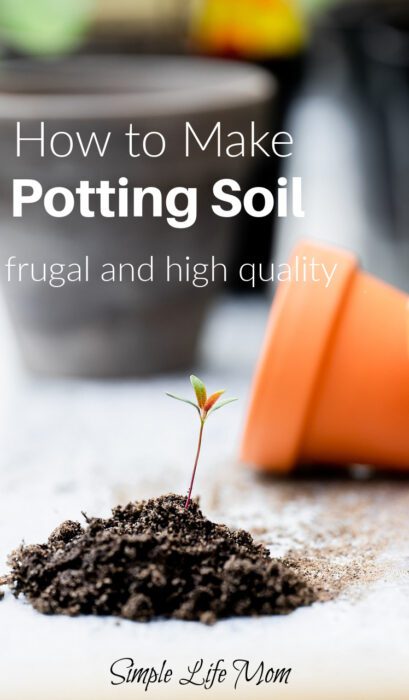
I’ve made potting soil myself before, but it’s been a while. I needed to grab almost all of the ingredients from scratch.
Why Make Potting Soil
So, why would anyone make their own potting soil?
First, it’s very frugal. Like a lot of homestead activities, the startup is more costly than buying one small bag of potting mix or potting soil, but the end result is high quality and really pays off as it is more frugal in the long run.
Here are some of the Benefits:
- You can use the ingredients to make new potting soil each year, for years and years
- You know exactly what’s in your potting soil and the nutrients involved
- you’ll learn more about your soil needs and save money
Another reason to make your own potting soil is because sometimes you do not get what you pay for. Last year, for the first time ever, I had a hard time getting my seedlings to live. It was the weirdest thing. No matter what I did, they sprouted and died. I soon started hearing the same thing from gardeners all over the US. I tested my soil and the pH was off the charts. I was basically burning my plants with alkalinity. Also, even though it was amended, it was low in all macronutrients. I’m not saying there was a conspiracy to harm all gardeners in the country, but I am saying that there were a lot of large companies that cut corners and sold us soil that possibly sat in 2020 and wasn’t used and was possibly contaminated. This experience just gave me the kick in the butt I needed to start making my own potting mix again.
Why Not Use Garden Soil?
Garden soil can not have the correct balance of nutrients.
Garden soil can also have large chunks of material that makes it hard for a seedling to properly germinate and grow.
But you could test it and sift it. So what’s another reason?
Potting soil is balanced with ingredients so that the mixture holds moisture more evenly. The most important element for a sprouting seed is moisture. I use potting soil and then place plastic wrap over the top of my containers in the beginning so that the grow lights that are warming the containers don’t dry out that top layer of soil. If you use garden soil, it’s much harder to keep that top layer evenly moist and to stop it from crusting over.
Another reason to use potting soil instead of garden soil, is that garden soil will not always allow enough drainage to keep the mixture light and fluffy for those seedlings. Potting soil is mixed with ingredients to keep the soil from becoming bogged down by over watering.
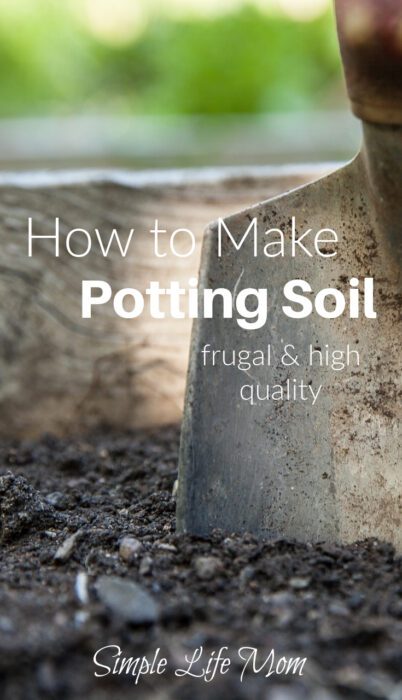
Potting Soil Ingredients
Potting soil needs a moisture maintaining ingredient. This is often done with:
- peat moss
- coconut coir (coconut husks)
- and compost
Potting soil also needs good drainage. This can be done with:
- sand
- pine chips
- leaf mold
- perlite (volcanic rock)
- and vermiculite (heated mica)
Potting soil needs a balanced pH. Some ingredients, like peat moss, can throw the pH off one way or another. This means adding additives to balance it back out. Common additions are:
- limestone (raises pH to make it more alkaline)
- blood meal (high in nitrogen, lowers pH and makes soil more acidic)
Fertilizer. This isn’t a necessary ingredient in the potting soil if you are going to be starting in very small containers (see below), but you can use:
How to Make Potting Soil
The best way to put these great ingredients together is by the bucket and cupful. You’ll add more of some things and less of others. I’ll also give you some options so you can add what you have on hand or is cheaper in your area.
I like to make 5 gallons at a time. I have a 5 gallon bucket and it’s nice to fill it when I’m done mixing. I mix in a wheelbarrow so that I can just dump the ingredients and stir them well. I then put everything into my large bucket and take that to where I am planting seedlings.
If you need a lot more potting soil at once, then just double and triple the recipe as needed.
Potting Soil Recipe with Coconut Coir
Tools Needed:
- Wheelbarrow
- Small shovel
- 1 gallon bucket
- 5 gallon bucket
- measuring cups
Ingredients:
- 2 buckets coconut coir
- 1 bucket perlite
- 1 bucket vermiculite
- 1 bucket compost (or sifted manure)
- 2 cups sand
- 1/4 cup organic fertilizer (optional)
Directions:
- Combine all ingredients in the wheelbarrow and mix well.
- Add water and stir again. You want it to be completely wet, but not sopping wet.
- Add to the 5 gallon bucket. It’s now ready to use.
Potting Soil Recipe with Peat Moss
Tools Needed:
- Wheelbarrow
- Small shovel
- 1 gallon bucket
- 5 gallon bucket
- measuring cups
- measuring spoons
Ingredients:
- 2 buckets peat moss
- 1 bucket perlite
- 1 bucket vermiculite
- 1 bucket compost (or sifted manure)
- 2 cups sand
- 2 tablespoon ground limestone
- 1/4 cup organic fertilizer (optional)
Directions:
- Combine all ingredients in the wheelbarrow and mix well.
- Add water and stir again. You want it to be completely wet, but not sopping wet.
- Add to the 5 gallon bucket. It’s now ready to use.
Potting Soil Recipe with Leaf Mold
Tools Needed:
- Wheelbarrow
- Small shovel
- 1 gallon bucket
- 5 gallon bucket
- measuring cups
Ingredients:
- 2 gallon buckets of leaf mold (or coconut coir)
- 2 gallon bucket of composts (or sifted manure)
- 1 gallon bucket of perlite
- 1/4 cup organic fertilizer (optional)
Directions:
- Combine all ingredients in the wheelbarrow and mix well.
- Add water and stir again. You want it to be completely wet, but not sopping wet.
- Add to the 5 gallon bucket. It’s now ready to use.
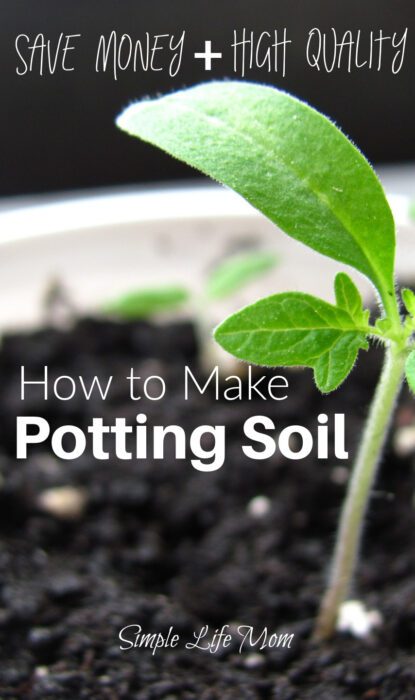
But Wait! What About Fertilizer?
All of these recipes are totally fine to use with vegetable and fruit seedlings. Initially, seedlings gain all of their nutrients from their seed. They need the proper temperature and moisture content and after that they can sprout beautifully.
If you are planting in larger containers (solo cup size), then you will want to add a few extra nutrients to give them a boost for after they have fully sprouted so that they can continue to grow well.
Add 1/4 cup organic fertilizer to the recipes above.
There are a lot of organic options out there today so you don’t need to make your own, but you can.
Instead of the organic fertilizer, add 1 tablespoons each of blood meal, kelp meal, and bone meal.
Even More
Have you made your own potting soil before? Let us know about your experiences.
Don’t know how to start to create a garden? How about getting started raising chickens? Check out the following articles for more information:
- How to Start a Garden – Where, When and What to Grow
- How to Plan a Garden with Seed Planning
- How to Start Raising Chickens in Your Back Yard
- Which Breed of Chicken and How to Get Them


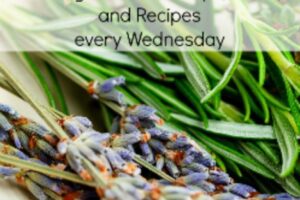
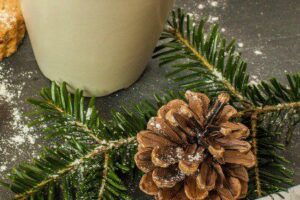
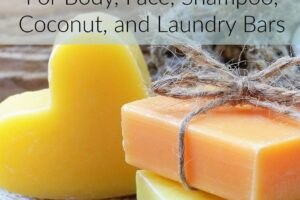
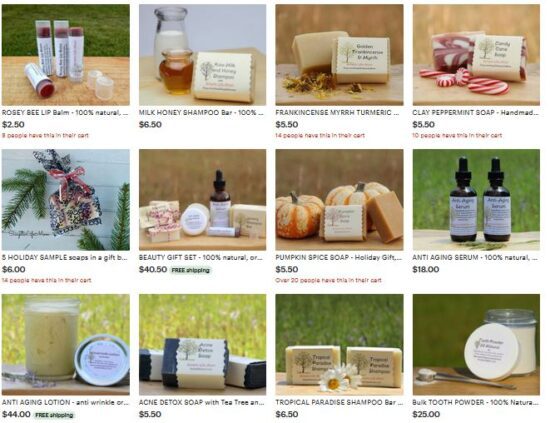
1 Comment
Leave your reply.